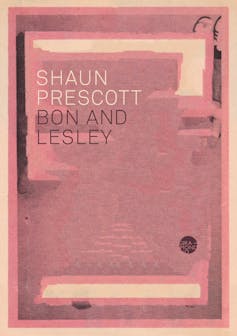In Bon and Lesley, Shaun Prescott has written an Australian horror story of uniquely local proportions
- Written by Bonny Cassidy, Lecturer in Creative Writing, RMIT University

If ever a novel set out the territory that its author would continue to travel, Shaun Prescott’s debut The Town (2018) did just that. It was like the indie boy band that smooths all your favourite punk acts into a one-stop melange.
When I reviewed The Town in these pages in 2019, I noted in particular how Prescott was able to synthesise elements from the late David Ireland and Gerald Murnane to create an augmented Australian realism. Like Murnane and post-plot novelists such as César Aira or Ottessa Moshfegh in My Year of Rest and Relaxation, Prescott wants the reader to focus on the poetics of variation within limited settings, scenarios and language.
Why? In The Town, Prescott took this approach in order to sit with his creatively blocked and socially awkward narrator. It didn’t totally work; the idea couldn’t endure the length of the novel. But in Prescott’s latest, Bon and Lesley, the banal and repetitious nature of the novel’s voice and structure create a more purposeful horror story of uniquely local proportions.
Review: Bon and Lesley – Shaun Prescott (Giramondo).





